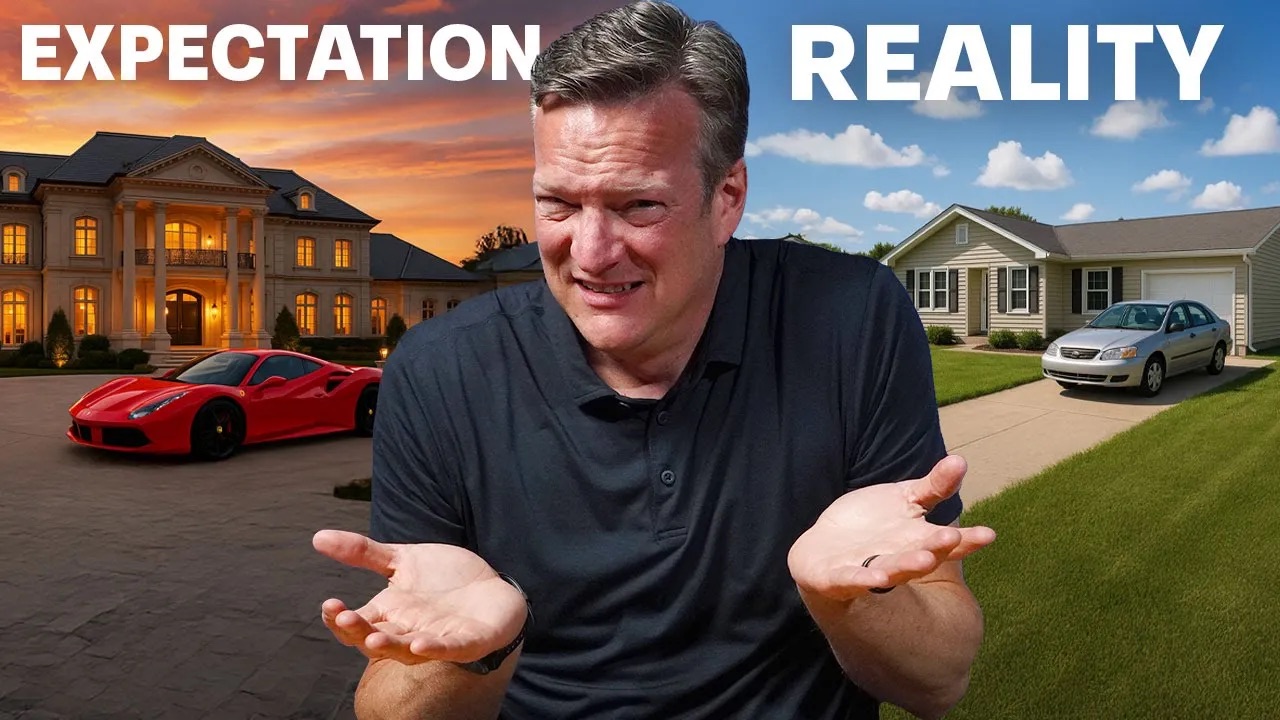How much is it to actually be rich today, and realistically, what's it take to get there? How do you do it? Now first, look, I'm the optimist here, so I always think a million dollars is a lot of money, but we should definitely address the fact that a million dollars is not what it was in 1996. And why do I choose the year 1996? There's a reason. It's because The Millionaire Next Door changed my life, and that was one of those things that kind of was like, "Man, I want to be aspirational to hit this goal," but we have this thing called inflation that has changed things a little bit. It's wild if you think about a million dollars then. If we inflate that out from 1996 all the way out to 2023, one million dollars back then is worth almost two million dollars today. The thing that you were aspiring to then now has doubled, and so obviously that's something when we think about the goals that we set and what we are striving towards, we really need to take that into account. So that's one of the reasons why a million by itself may not be enough money, but that's not the only reason why that might not be.
Yeah, I mean, I think about because I've been in the game long enough that it was not uncommon back with all the people who are writing books that were in the financial space. They were talking about like The Wealthy Barber. 10% savings, if you think about Dave Ramsey, he's talking about 15%. There's a reason that all the content back in the day in the '80s and '90s could talk about 10% and 15% is because you had pensions. You had a much more stable Social Security. Those things helped out, but unfortunately, we've seen pensions are going away. Yeah, it's really interesting when you look at the total number of retirement plans in existence between defined contribution - those are plans where you, as a participant, put money into them, or defined benefit - where the actual benefit for you is defined - they've crisscrossed. So back in 1975, there were only about 8,500 defined contribution plans. Fast forward to 2020, and it's almost 87,000 of those plans. And we're just looking at big plans with more than 100 participants. But when you look at the number of pensions in 1975, there were 20,000 pensions of that size. That number has now decreased to only 7,000. So what that's suggesting is that the onus for retirement is now on us as savers to contribute to that future retirement, not just bank on our employer providing some benefit for us when we leave the workforce. Well, if you think about in the past, it was employers would kind of take care of you after you gave them decades of your service. If that's kind of going away, how about the social safety net? We hear Social Security; it was kind of implemented to be that backstop. Unfortunately, we all know it; it's just kind of unspoken, but if you actually survey the general public, 71% of Americans believe that their Social Security will run out within their lifetime. And if you actually look at the mathematics, right now, the latest projections actually suggest that Social Security realistically could run out of money by 2035 if no changes are made. And so we don't know what those changes are made, but we do know it is uncertain right now. This thing that you could have banked on that could have replaced a large percentage of your working income might not be the same way. So again, this is just one more example of where the onus is now on you, the saver, the worker, the accumulator, the investor, to be saving for your future because no one else is going to be doing it for you.
Well, this is one I love that we're nerdy about. I mean, let's just get down to the point here. We showed you because we had already done this exercise. We said, man, with inflation kind of popping off like it's been doing, a million dollars is now, in 1996, the equivalent of two million. And then I saw an article that confirmed our research. There was an article that came out from Charles Schwab that was saying that they went and surveyed across America to ask Americans, "What do you consider to be rich or wealthy?" And the average, now obviously some of these coastal cities, it was more, but if you took the average for the United States, the answer was 2.2 million dollars, which is wild, right? So I think when Dr. Stanley wrote The Millionaire Next Door, probably would have been an inbox - "Hey, what does it take to be wealthy? What is the wealth number?" A million bucks. Now we were in pre-show prep, Ryan, and you said a great thing. Hey, Jim, but geography matters when it comes to rich. Like, you might be rich in a small suburb in Georgia but not rich in a major city. And what I think is great about this Schwab article that came out is they actually looked at a number of different geographies to arrive at that 2.2 million. So if you're in Seattle, the rich number was 3.1 million. If you were in DC, it's 3 million. Atlanta, 2.3 million. Well, when they looked at all the different cities they polled, 2.2 was the average. So that is kind of now considered to be the new norm of what wealth is or what people consider to be wealthy or rich. But, and look, the numbers show that it indeed is a pretty plush life. If you think about what can 2 to 2.2 million dollars do for you in retirement, we use safe withdrawal rates. If you take into account safe withdrawal rates, the Trinity stock, and all the other research out there, 4% is a pretty solid thing. So if you think about two to two point two million, 4% - that's about eighty-eight thousand dollars a year. And that's only part of the story. So if you have a portfolio with 2.2 million dollars, that can generate eighty-eight thousand dollars per year for you. And then you think about the average social security benefit of about forty thousand dollars a month - forty thousand dollars a year - that brings your total income in retirement to about a hundred and thirty thousand dollars a year. If you're someone who worked for an entire career life cycle and you've saved up 2.2 million, 130,000 a year is a fantastic living.
Well, I think if you think about it in terms of month-to-month living - assuming you're like because we want you to be debt-free in retirement - you don't have to save for retirement anymore, which for a lot of you out there, that's close to a quarter of your income is always going towards savings and investments. You don't have to do that anymore. Now you get to basically consume over ten thousand dollars a month. That's a pretty plush lifestyle, and a lot of you guys are thinking, "And that's why we did want to give some context. Let's ground this number. If it's a hundred close to 130,000 a year, what is actually the median household income?" Oh, it's around seventy-one thousand dollars. So that means it's like a hundred and eighty percent of the median. And now remember, the question for Americans that was asked by Schwab was like, "Hey,
how much do you need to retire? How much is an appropriate retirement portfolio? How much is rich? How much is wealthy?" So some of the stuff we're going to share, we're going to use that 2.2 million as our baseline. But remember, that level of wealth today will generate a standard of living that is a hundred and eighty percent the standard of living of the median household in America. So this is living pretty large. This is a really good retirement living.













